Tales of Future Past v2
Main menu
- Home Page
-
Life on Other Worlds
- Life on Other Worlds
- Life on the Planets
- Life on the Moons
- Tales of the Stars
-
Future Living
- Future Living
- Life in 2000 AD
- Leisure
- Shopping
- Drive-In Market
- Cosmetics
- Laundry
- Strikerette
- School: 1999
- Optionics
- Life in 2055
- Future Movies
- Sensorama
- Scopitone
- Radio Pirates
- Weather Control
- Automatic Lumberjack
- Cold Light
- Eternal Youth
- Cryonics
- Suspended Animation
- Space Funeral
- Space Holidays
- Trapped by Television
- Robot Dogs
- Churchill: 1982
- Future House
- Future Kitchen
- Future Food
- Future Work
-
Future City
- Future City
- Skyscraper World
- Tomorrow's Skyline
- Urban Utopias
- World's Fair City
-
Future Transport
- Future Transport
- Rollerball
- Hydrofoil
- Tourism
- Future Liner
- Monorail
- Garden Rail
- Propeller Rail
- Water Rail
- Rocket Trains
- Radio Trains
- Rocket Mail
- Jet Boat
- Desert Liner
- Huge Truck
- Channel Tunnel
- Iron Whale
- Sea Slug
- Sea Slug 2
- Hovercraft
- Ice Field
- Rocket Port
- Vacuum Trains
- Transatlantic Tunnel
- Future Lift
- Travel: 1928
- Concrete Liner
- Teleportation
- Future Car
- Death Rays
Trapped by Television
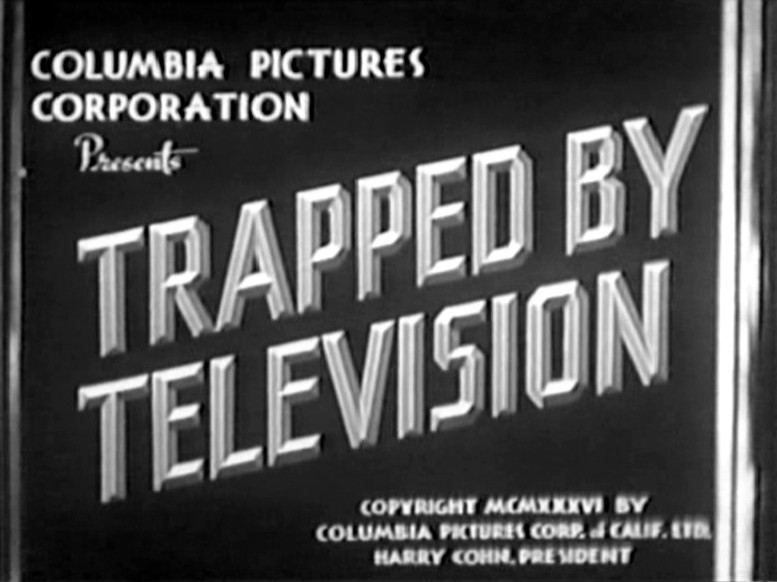
Trapped by Television -
Whatever it is, Trapped by Television is a perfect embodiment of the public's fascination with the coming of television in the 1930s. Contrary to popular belief, television was already a familiar topic by then and experimental broadcasts had been going on for over a decade. In fact, by the time Trapped was released the BBC had already started a regular television service and the Germans were preparing their own. The only question was, what kind of television system would win out -
Whatever it would be (*cough* Marconi *cough*), Trapped shows that industry would react to a practical television as it always does in cheap pulp fiction; by gangster tactics of kidnapping and murder instead of the traditional high road of locking up all the patents on rival systems and when that fails, ripping off your competitors blind and then letting the courts sort it out.

Trapped tells the story of young electrical engineer Lyle Talbot, who has developed a new television that will set the world on its collective ear. Aided by bill collector Nat Pendleton, who shows up to repossess Talbot's equipment and stays to help out, and backed by fast-
You had to be there. Anyway, what Talbot comes up with is a television system the like of which the world wouldn't see in real life until they were small enough to get stuck into cell phones.
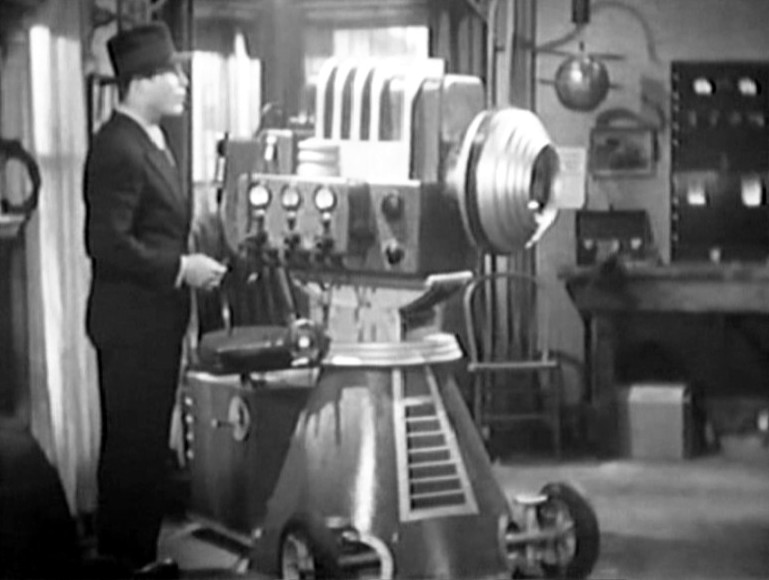
Television camera or death ray? Who cares when you've got art deco goodness like this to gawp at. Not only does it look cool, but this thing is streets ahead of anything that would be available until the 21st century. It's not only a (relatively) high-
For all I know, it might have colour as well, but since this is a black and white film, that's hard to determine.
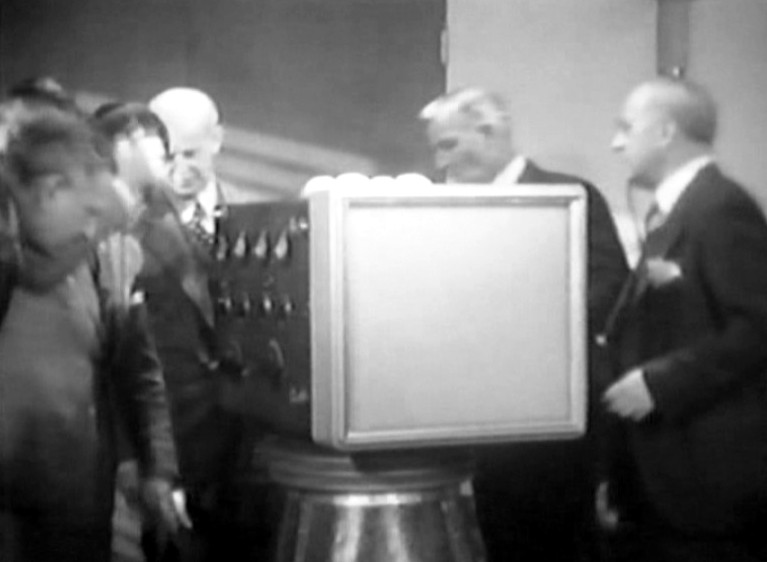
The receiver is equally impressive. It has a bigger screen than anything before the '50s, but what's really catching the attention of these middle aged technophiles are the controls. Buttons! Switches! Dials! Knobs! More Dials! That's what technology is all about.
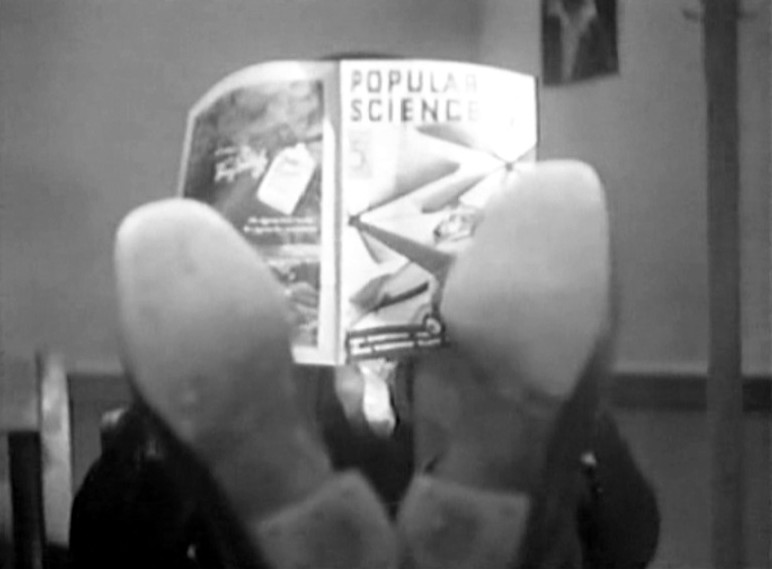
Every time I see this scene the hairs raise on the back of my neck. Look at the magazine Pendleton's reading. It's the August 1934 issue of Popular Science. If I had one in mint condition, I'd be handling with gloves until I could get it scanned and then tuck it away in a plastic sleeve in my vault (Okay, the cabinet in my office). But what does this guy do? He rolls it up and sticks it in his pocket!
Has he no respect for Future Past?
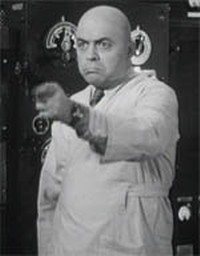
Mr Talbot's claim to immortality is that he was the first actor to play Lex Luthor on the screen.